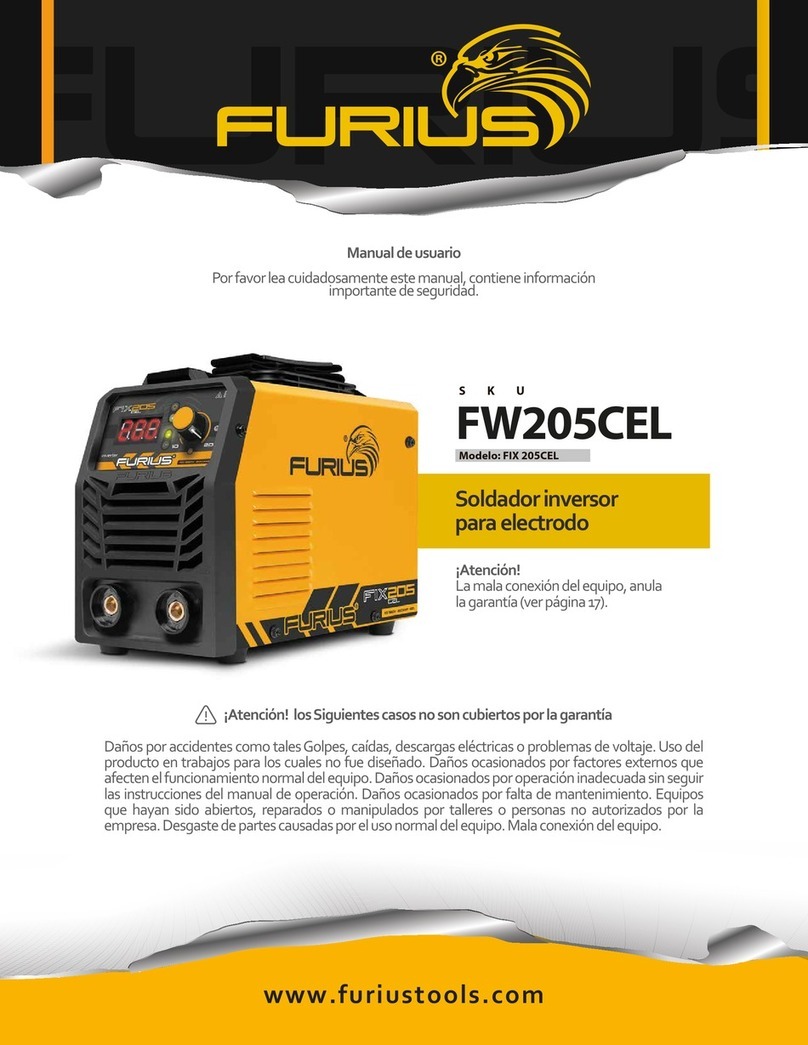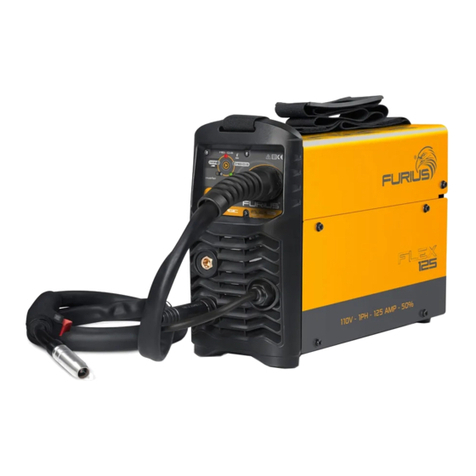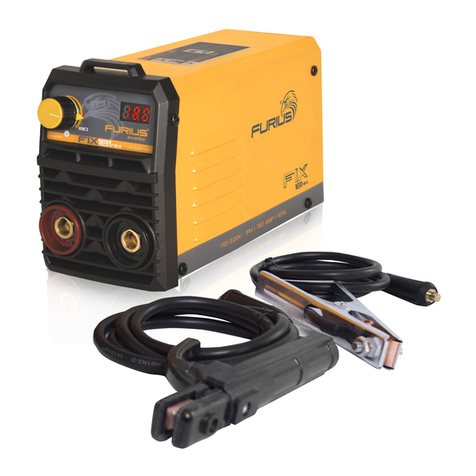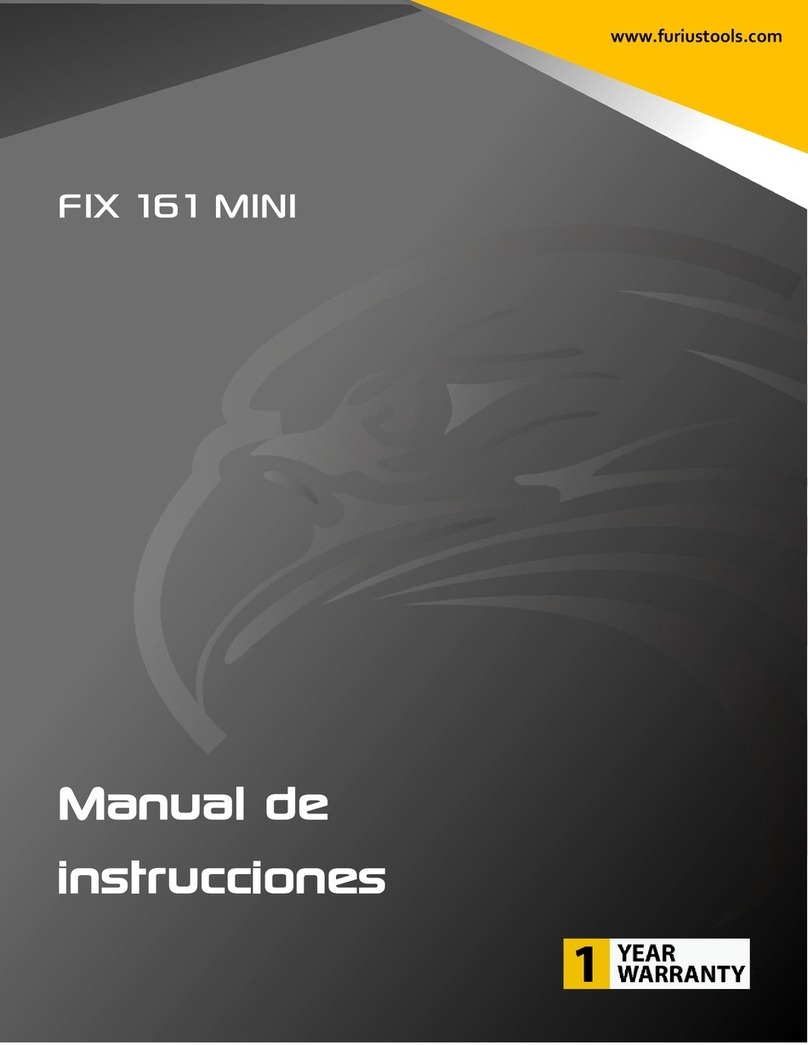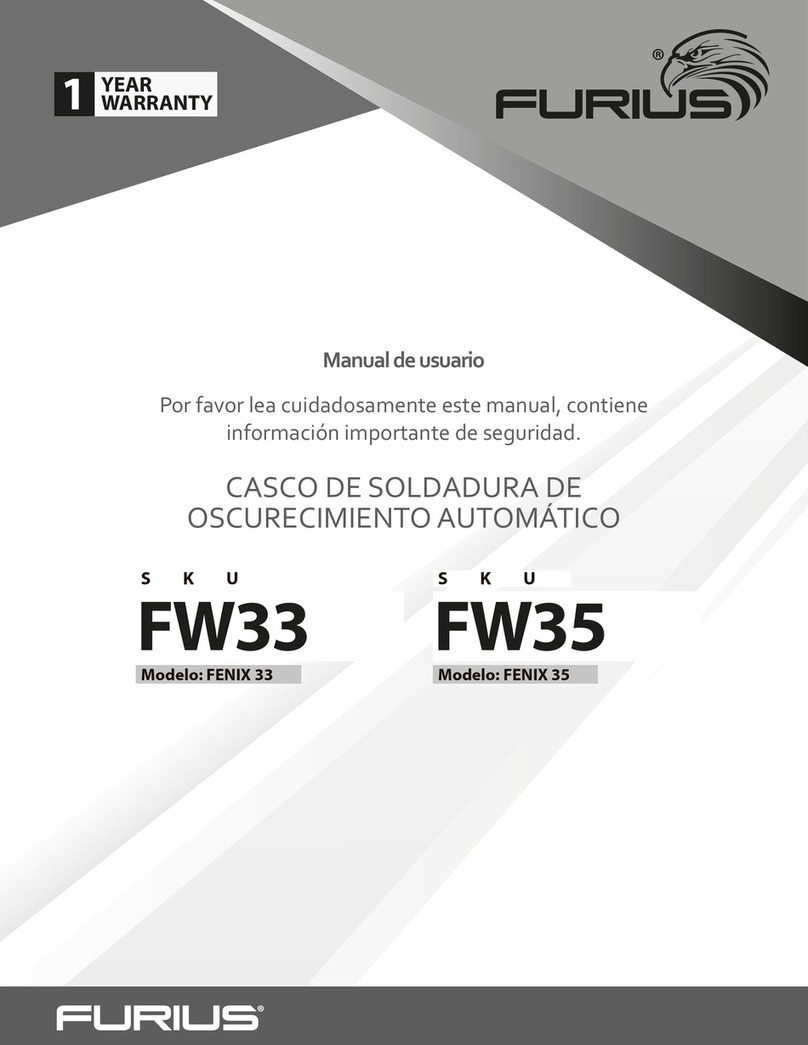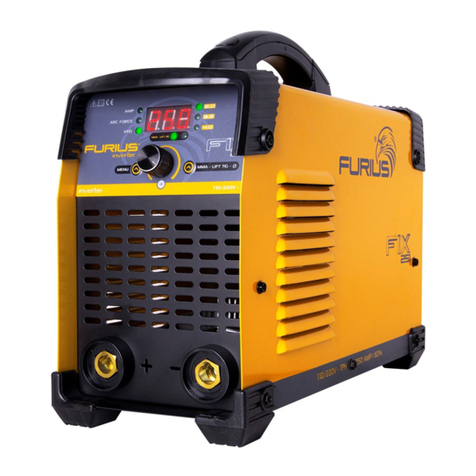• Make sure the power cord is properly connected to the electrical outlet. If you do install a plug, be sure to
respect the cable color codes. This should not be modified in any way, use plugs in accordance with the
standard to reduce the risk of electric shock.
• Turn off the equipment when you finish your work and disconnect it from the electrical outlet.
• Do not leave the equipment connected to the electrical outlet or with the switch in the ON position without
attention.
• Only place the electrode holder clamp or torch on an insulated surface regardless of whether the electrode
connected or not. Avoid shorting with the work clamp (ground). Remove the electrode from the electrode
holder if the welding process is interrupted or has ended.
• Place the machine switch in the OFF position at the rear of the equipment and disconnect the power cord
from the electrical outlet each time changes are made in the work area, when removing the electrode holder,
torch, or clamp. work (ground) and when transporting or cleaning equipment.
• Pay special attention to the condition of the power cable, if the cable is damaged, repair it with a qualified
electrician, PREFERENTLY take it to an Authorized Service Center by UJUETA MÉXICO, S.A. DE C.V.
• Avoid tensioning the cables, do not move the machine by dragging it from the cables, if you need to move
it, disconnect it from the outlet. Do not use the power cord to suspend the machine, move it, or pull it to
disconnect it from the electrical outlet. Keep the power cord away from heat, oils, pointed surfaces, or
moving parts. A cable in poor condition increases the risk of electric shock.
• Pay attention to the condition of the electrode holder, torch and work clamp (ground) cables, especially if
they malfunction during the welding application or when the application result is not adequate. Check the
whole set: connectors, electrode holder, torch, work clamp, repair or replace them with a qualified
electrician, PREFERENTLY take it to an Authorized Service Center by UJUETA MÉXICO, S.A. DE C.V.
• Avoid contact with the electrical circuit, it can have negative consequences for the operator's health.
• The low DC voltage of the machine output makes it suitable for use in confined or humid spaces. However,
excessive moisture or sweating on clothing should be avoided. Make sure there is an insulated surface where
the machine can be placed.
• Pay attention to grounding systems when welding on electrically operated equipment or systems.
Improper connections to your welding equipment can allow welding process current to flow through the
grounding system. Always connect the work clamp as close as possible to the welding area, avoid placing it
in a random place.
• In the event of an accident, disconnect the machine from the electrical outlet immediately.
• Only allow qualified personnel to repair the machine with original spare parts, this guarantees that the
machine remains in optimal operating conditions.
• Keep the machine out of the reach of rain and do not use it in humid environments.






